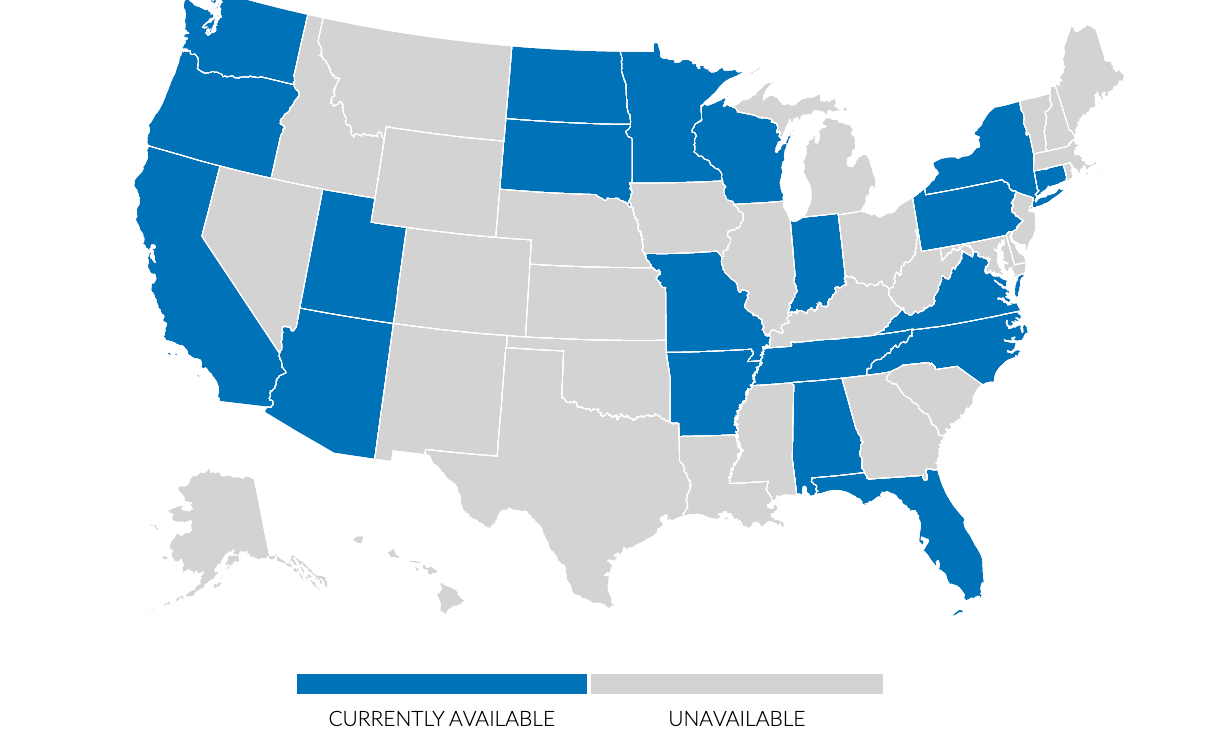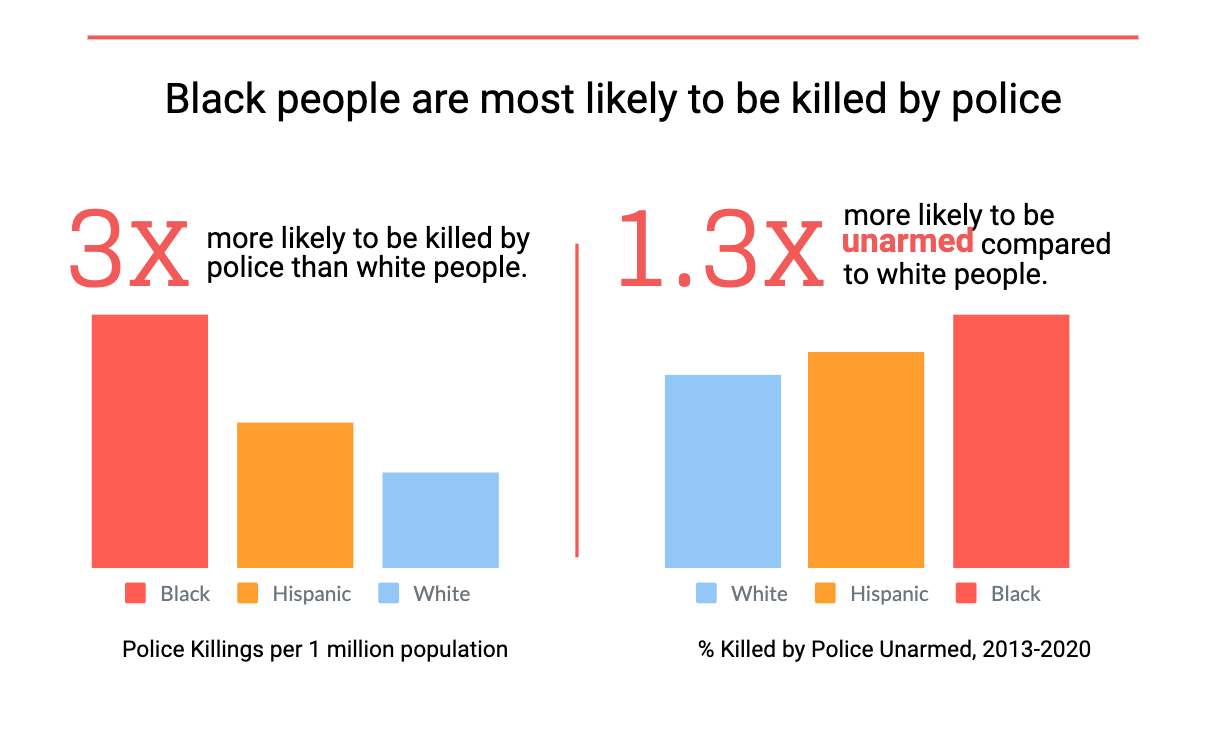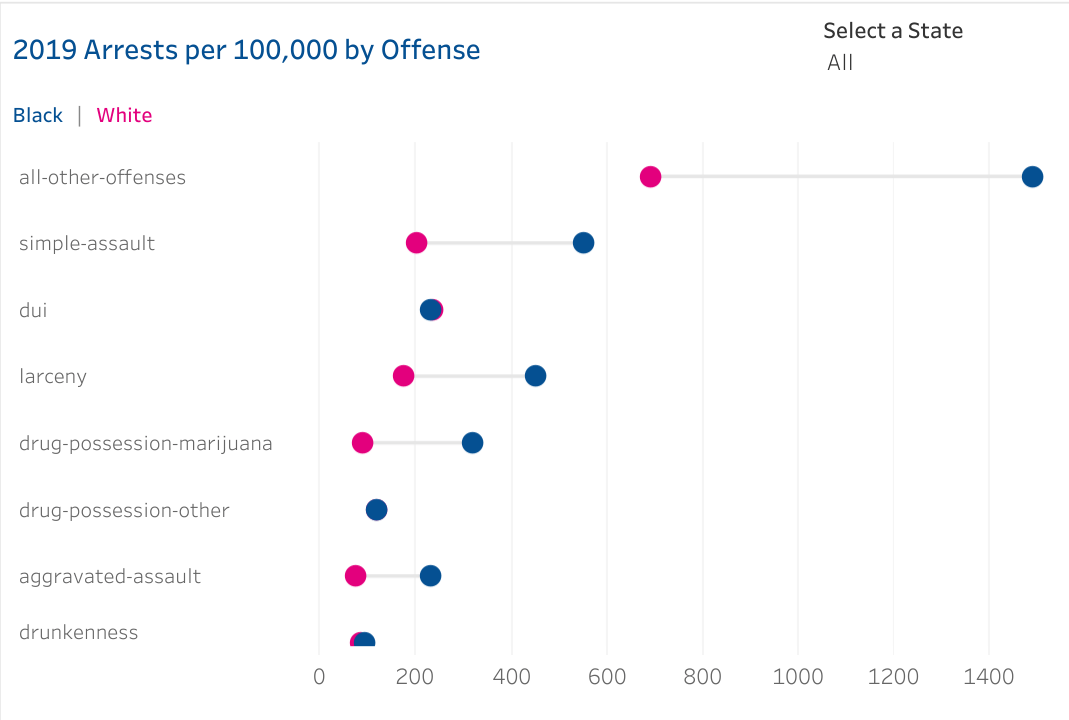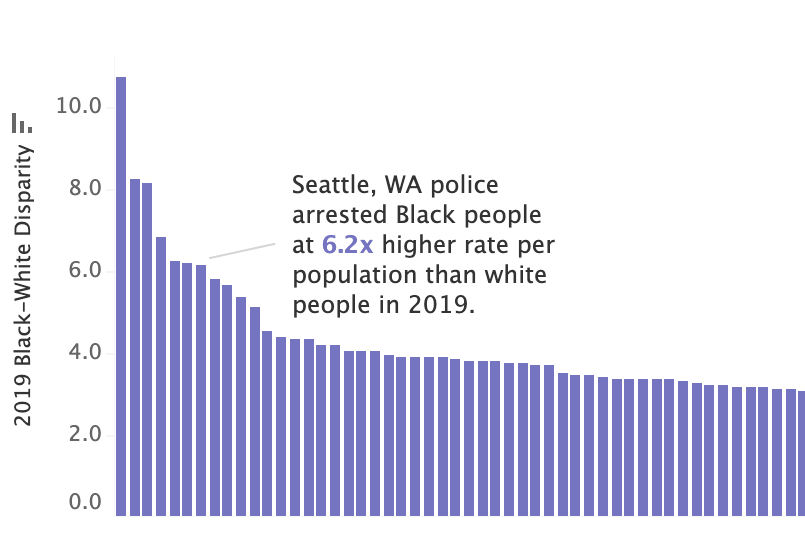The role of data
Data at the community, state, and national levels can illuminate race-based disparities in the sentencing, incarceration, and all aspects of the criminal justice system. To inform efforts for a more equitable justice system, advocacy organizations, policymakers, and district attorneys offices are using data to understand where racial bias exists in the system, and push for solutions and policies to eliminate it.
Why it matters
While racial disparities inequities exist within every level of the justice system, it’s necessary to look to the root cause of disparities in justice involvement—arrests and sentencing—to understand how to make progress. From local police departments disproportionately arresting people of color to race-based disparities in sentencing, building a more equitable justice system starts from the ground up. Local data can expose harmful trends at the local level so advocates and decision-makers can be empowered to make change.
Data in Action
USAFacts: Racial Disparities in Policing
Through this data from USA Facts, viewers can explore racial disparities in policing-related outcomes, including arrests by race, age, and offense. Delve into the data to explore differences across geographies, and compare state-level policing outcomes with crime rates.
Explore the dataPolice Scorecard: Nationwide data and insights on policing
In this comprehensive, unique data resource, users can explore data on over 16,000 police and sheriff's departments across the U.S. The data covers a range of indicators related to racial bias in policing, from department budgets to use of force to complaints of misconducts. Data is accessible at the departmental level and also presented nationally for a comparative view.
Explore the dataMore datasets to explore on justice
Our advisors recommend the below datasets to explore trends in policing, justice system involvement, incarceration, and more. Coming soon: These datasets will be shaped and ready for analysis in Tableau.
Have datasets you would like added to this list, or prioritized for workability in Tableau? Visit the dedicated Tableau Community Forum to suggest.
Measures for Justice is creating an actionable data portal where activists and organizers can access data on a number of indicators related to the justice system, from sentence length to arrest data by race.
The federal government does not collect robust data on police violence, and police departments are not mandated to provide this information. Mapping Police Violence aims to provide a complete dataset on police violence in the U.S.
The Police Data Initiative works with law enforcement departments who have released datasets on a number of indicators, from complaints against officers to community engagement. So far, the initiative includes 130 departments and over 200 datasets.
On average, police officers in the U.S. make over 50,000 traffic stops per day. The team at Stanford Open Policing Project is collecting, analyzing, and sharing data on stops and outcomes: The dataset currently contains over 200 million records.
Disaggregated data on the incarcerated population by race/ethnicity is critical for understanding disparities. Prison Policy Initiative has made this data (current as of the 2010 Census) available for download and analysis.
This publicly maintained dataset collects and categorizes every interaction between a member of the public and a police officer that results in a fatality, including officer involved shootings, but also suicides, fatal motor vehicle accidents, and accidental deaths. The data is extensively researched and includes information about the race, age, and location of each person in the data.
The FBI collects this data on arrests and incidents that is reported on a voluntary basis by law enforcement agencies in the U.S. Data on arrests includes the race of the person arrested, and data on some crimes include the race of the victim to allow for racial disparities in police arrest activity and crime victimization to be analyzed and linked by geographic region as well.
Learn more about race, justice, and data in the US
Learn more about race, justice and data in the US

Improving crime data collection
Amy Bach, CEO of partner organization Measures for Justice, writes that more robust data collection on policing and justice is essential for understanding how policing affects communities.

Fighting bias by measuring it
Center for Policing Equity CEO Philip Atiba Goff discusses how the organization is working with communities and police departments to create data-driven progress.

Identifying trends in policing
Sam Sinyangwe of Mapping Police Violence writes in FiveThirtyEight about what their data shows on the geography of police violence in the U.S.
Questions? Feedback?
The Racial Equity Data Hub, hosted by Tableau Foundation, is a work in progress. Your feedback is welcome as the Hub continues to evolve. Visit the dedicated Tableau Community Forum to offer feedback, ask questions, and meet others interested in working with data for racial equity and justice.


